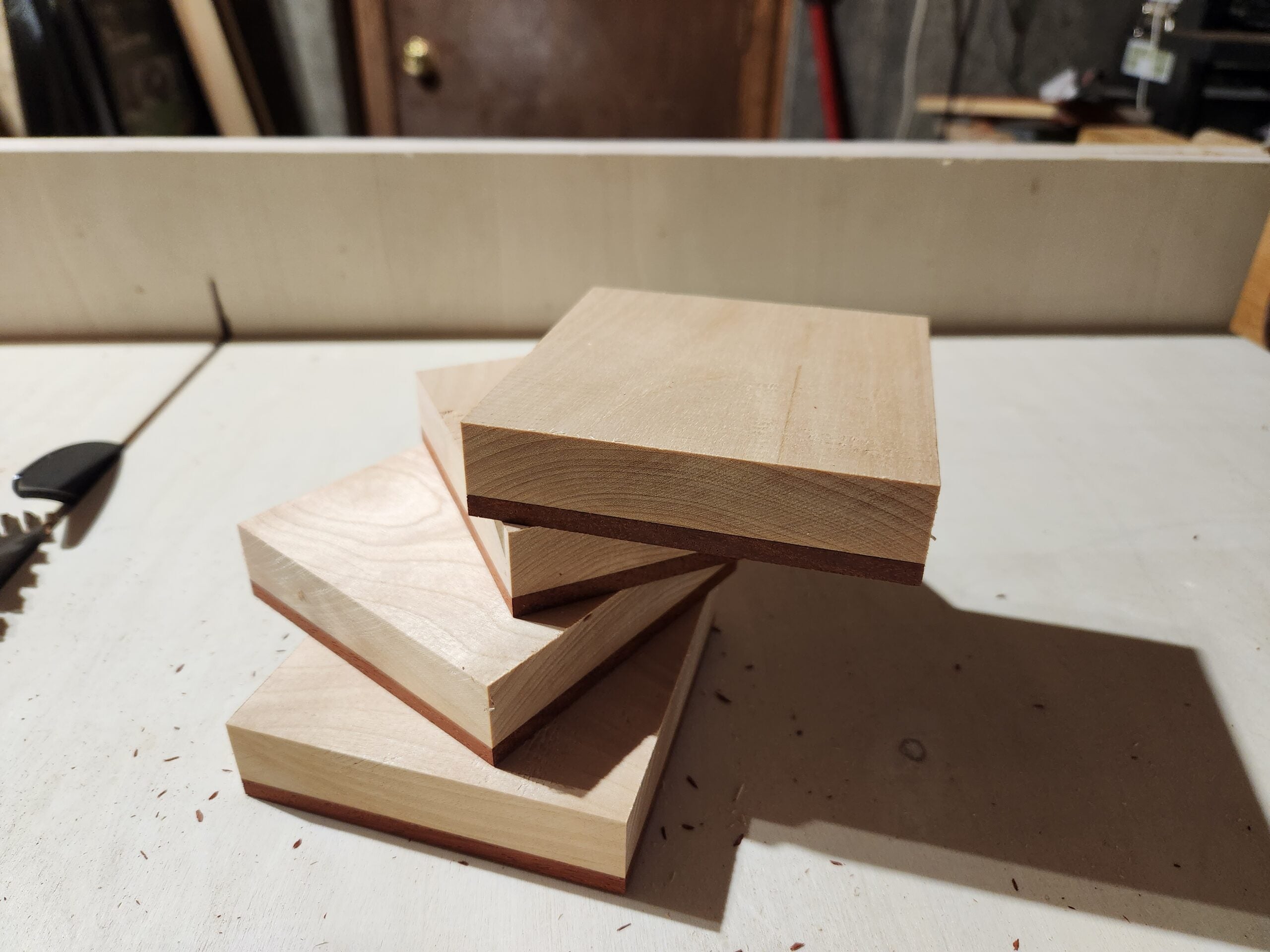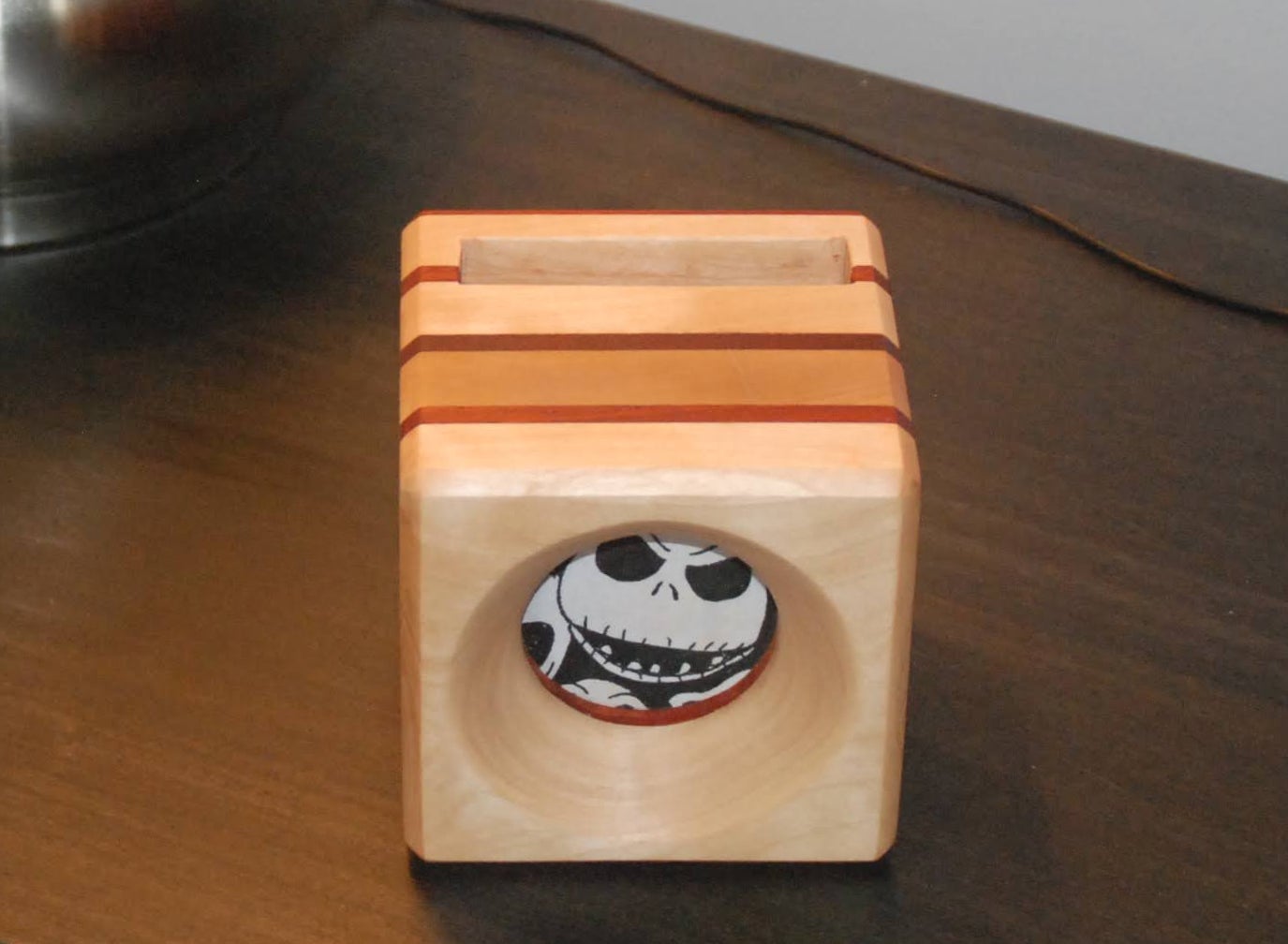We may earn revenue from the products available on this page and participate in affiliate programs. Learn more ›
Since the dawn of the smartphone, people have been cobbling together DIY speakers to enhance their subpar sound. When I was in college, a popular solution was to stick the phone into an empty red Solo cup on the counter. It’s amazing how well that worked. But anything that feels at home in a college dorm probably isn’t classy enough for an adult with kids closer to their freshman year at college than you are.
Fear not: with just a few hours and some scrap wood, you can build a functional, attractive, and sweet-sounding DIY speaker for your phone that will leave all your old college friends impressed.
How phone amplifiers and other passive speakers work
Whether it’s a red Solo cup, a plastic mail bag, an acoustic guitar, or a custom-built wooden phone amplifier, all of these passive acoustic radiators—as they’re most accurately described—work on the principle of acoustic impedance. One way to conceptualize impedance is to think about pushing against a wall, says Finnur Pind, CEO at Icelandic sound simulation company Treble Technologies. Impedance is how hard the wall pushes back against you.
As sound waves travel through the air, fluctuations in pressure cause the air to move. When those sound waves collide with one another or the sides of a passive speaker, they can merge to amplify the sound, cancel one another out, or some combination of the two. As this happens, the sound field changes differently over frequencies, the volume, clarity, and direction of that sound change. If your amplifier is well designed, that change should be for the better.
“We should recognize that the laws of physics apply,” Pind says. “We aren’t generating energy out of nothing—we are using smart tricks to amplify sounds.” Essentially, these passive speakers amplify certain frequencies at the expense of others. In my DIY speaker box, for instance, the high frequencies seem to receive the biggest boost, the mids drop out of the audio mix the most, and the lows stay about the same.
Far smarter people than I can do the math to design boxes that target certain frequencies, but a basic principle is that a conical or trumpet-shaped cavity will give the best results, Pind says. It should start narrow in the back where the sound is generated, then open gradually. While there are ideal angles based on the size, material, audio source, and other attributes of the speaker box, I kept it simple based on the tools I had available and recommend you do the same, at least to start. Still, this is the sort of project I’m eager to build more of, and look forward to experimenting with how different cavity shapes affect the sound.
Warning: DIY projects can be dangerous, even for the most experienced makers. Before proceeding with this or any other project on our site, ensure you have all necessary safety gear and know how to use it properly. At minimum, that may include safety glasses, a facemask, and/or ear protection. If you’re using power tools, you must know how to use them safely and correctly. If you do not, or are otherwise uncomfortable with anything described here, don’t attempt this project.
Stats
Time: 2 to 4 hours
Cost: $0 to $40
Difficulty: easy
Materials
1 (2-foot-long) 1-by-6 board
Wipe-on polyurethane
(Optional) fun scrap of 4-by-4-inch fabric
Jointer
Planer
Miter saw
Table saw
Crosscut sled
Tape measure
Drill press
Forstner bits
Router
Straight-cut bit
(Optional) 22.5-degree chamfer router bit
Orbital sander
Sanding discs (120-, 150-, 220-grit)
Wood glue
Clamps
How to build a passive phone amplifier
1. Select a wood pattern for the box. One of the defining aesthetic choices of a project like this is the wood you make it from. Keep a simple, clean look by using all the same kind of wood to create a monochrome piece where the grain is the eye-catching part. Or use different kinds of wood to create contrast and patterns. For my speaker, I mostly used maple, with small padauk boards in between to create stripes. Before you go out and buy wood for this project, spend some quality time with your scrap pile to see what kind of inspiration you can draw from there. All the wood I used was left over from a recent batch of cutting boards.
2. Mill your boards to size, but don’t cut them to length. This is a project where the glue joints will be very visible, so make sure they’re nice and tight by using properly milled wood. Start on the jointer to get one flat face and square edge. Then head over to the planer to flatten the opposite face. Finally, bring the boards to the table saw to cut them all down to width, which for my box was 4 inches.
(Optional) 3. Laminate your pattern boards together. If you’re using multiple wood types, glue them together face to face in the pattern you want—this is known as laminating. In my case, I simply glued the thin padauk board to the thick maple board, using a lot of wood glue and clamps to create a nice, tight connection. This essentially gave me a new board, with one side maple and the other side padauk. If you’re not doing this, you can go straight to the next step.
When the glue is dry, trim the new board to width on the table saw.
 Just some nicely laminated wood. Jean Levasseur for Popular Science
Just some nicely laminated wood. Jean Levasseur for Popular Science
4. Cut the boards to length. Whether you laminated your wood or not, now’s the time to cut the boards to the appropriate lengths for your project. I wanted my box to be approximately a cube, so I cut them to 4 inches long. And because my laminated pieces were about an inch thick, I cut four of them. This way, when I glued all the boards together at the end, I wound up with a 4-inch cube.
5. Choose the shape of your speaker’s interior cavity. Start by marking the center of each board by drawing diagonal lines from corner to corner. Where those lines intersect is the center.
[Related: The best apps for listening to music on your phone]
Now you have to decide what kind of shape you want to cut for your speaker. The simplest design is a cylinder: just cut identically sized holes in each board. If you don’t have any angled router bits, this is the fastest and easiest approach.
The second option is to cut identical holes in the rear three boards, then chamfer the front hole. This creates a unique look and allows the sound waves to disperse a bit more widely. I wound up doing this due to the limitations of the tools I had available.
For a design that more closely resembles what Pind recommends, use an angled router bit to create a conical hole from the back of the speaker to the front. This was my original plan, but I only had a 45-degree chamfer bit and that seemed like far too large an angle for the cavity. If I were to do this project again, I would use a 22.5-degree chamfer bit to make the holes. You’ll have to do the math to figure out exactly what size the holes in each board need to be—exact calculations will vary depending on the thickness of the wood you’re using, how many boards there are, bit angle, and the dimensions of your desired speaker cavity.
6. Cut the cavity holes in each board. Start with a Forstner bit to cut the smallest-diameter hole in each board, then use a router with the appropriate chamfer bit to create your desired flare angle, if needed.
Warning: Don’t drill all the way through the rear board. If you do, you’ll lose a significant portion of sound out the back of the box.
7. Create a stand and speaker access for your phone. The box is designed so your phone fits into a slot on the top, with a small hole to direct the phone’s audio into the speaker cavity. It’s easier to cut these out before gluing everything together. Using a router and a straight-cut bit, cut half of the phone channel into the front of the fourth (rear) board, and the other half of the channel into the back of the third board. This channel should be about a quarter-inch wider and thicker than your phone. Then cut a small canyon from where the phone’s speaker rests down to the speaker cavity, again on both the third and fourth boards. You’ll want this channel to be about a quarter of an inch square, at least.
You can make a template for this, but I just freehanded the cut by taking shallow passes with a small bit, and then cleaned up the edges with chisels.
 Without the phone on top of the speaker, you can easily see the slot it fits into. Jean Levasseur for Popular Science
Without the phone on top of the speaker, you can easily see the slot it fits into. Jean Levasseur for Popular Science
(Optional) 8. Add some flair to the front of the speaker box. In addition to a unique wood pattern, another way to customize the box is to cover the front hole with a piece of fun fabric. I chose Jack Skellington heads from The Nightmare Before Christmas. To get it to fit, I cut the fabric down to about 3.5 inches square—well, really my wife cut it down because she’s the fabric guru and I’m afraid of her rotary cutter.
The best part of this step is that it means you won’t have to clean up the inside of the cavity, because no one will ever see it.
9. It’s glue-up time. This step is pretty straightforward. Smear glue on the adjoining board faces, then press them together. If you have a piece of fabric from Step 8, place it between the first and second layers, pulling it as tight and flat as you can. The wet wood glue held it in place well enough for me to flatten it easily.
Try to get the edges of the boards as aligned as you can. This will save a ton of sanding and finishing time later.
Clamp liberally.
10. Sand to perfection, or as close as you can stand. Using a random orbital sander, move through the grits from 120 to 220. The most important thing is to clean up all of the glue mess, because that will look strange when you apply your finish. Also gently round over all of the sharp corners and edges.
11. Apply finish. For this project, I picked an oil based, wipe-on polyurethane. I find this type of finish the easiest to apply in a controlled fashion, and I didn’t want to risk getting any poly on the fabric. Follow the instructions from the manufacturer, particularly around surface prep. Always remove any dust and debris, because that will ruin your finish.
Once the polyurethane is dry, pull up your favorite tunes, drop the phone into place, and rock out. It’s just like those college parties, except better in every way.
>>> Read full article>>>
Copyright for syndicated content belongs to the linked Source : Popular Science – https://www.popsci.com/diy/phone-amplifier-diy/































